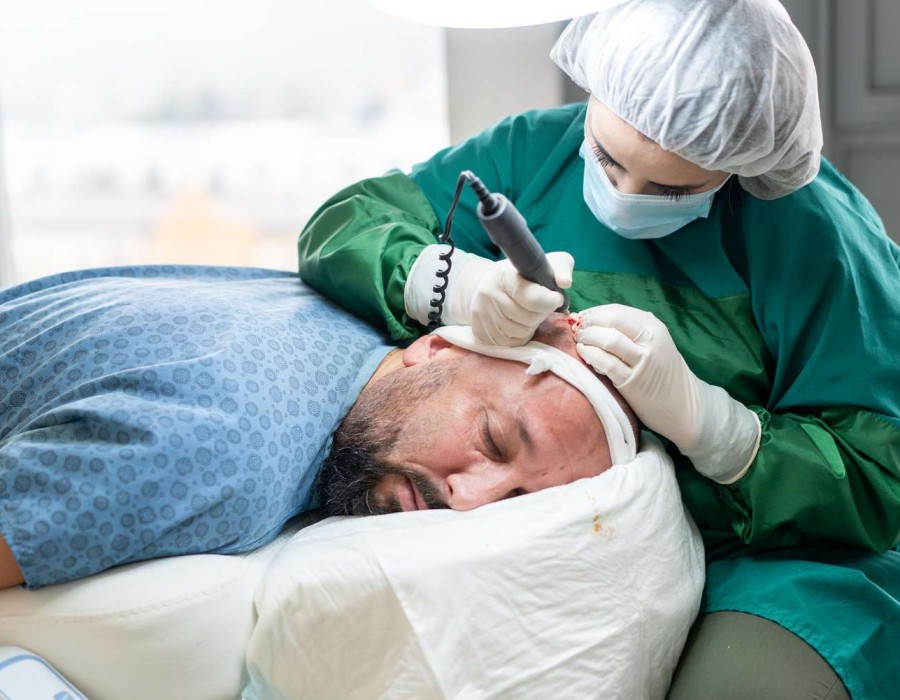Hair density plays a significant role in the outcome of Follicular Unit Transplantation (FUT). It refers to the number of hair follicles per square centimeter on the scalp and is crucial for achieving natural-looking results. This guide explores the importance of hair density in FUT Hair Transplant in Dubai, how it is measured, and its impact on the overall success of the procedure.
1. What is Hair Density?
Hair density is the measure of how many hair follicles exist in a given area of the scalp. It is usually expressed as the number of follicles per square centimeter (cm²). Hair density varies among individuals and can be influenced by genetic factors, age, and overall health.
Importance of Hair Density
- Aesthetic Appeal: Higher hair density generally results in a fuller appearance, making the transplanted area look more natural.
- Coverage: Dense hair follicles provide better coverage for thinning areas, effectively hiding bald spots and creating a seamless transition between transplanted and existing hair.
2. How Hair Density is Measured
To evaluate hair density, hair transplant surgeons typically conduct a thorough assessment of the patient's scalp. This involves:
- Visual Examination: The surgeon inspects the donor area and recipient site to determine existing hair density and patterns of hair loss.
- Trichoscopy: This non-invasive technique uses a dermatoscope to magnify the hair and scalp, allowing for a detailed assessment of hair follicles and density.
- Density Calculations: Surgeons can measure the number of hair follicles in a specific area to calculate the overall hair density. This measurement helps in planning the transplantation process.
3. Factors Influencing Hair Density in FUT Transplants
Several factors can impact the density achieved during a FUT procedure:
a. Donor Area Quality
The density of hair follicles in the donor area is crucial. Areas with higher density can provide more grafts for transplantation, leading to better results. Surgeons often assess the donor area, typically located at the back and sides of the head, to determine its suitability.
b. Hair Characteristics
The type of hair being transplanted also affects perceived density. For example, thick, coarse hair can create a fuller appearance compared to fine hair, even if the number of follicles is the same.
c. Patient’s Hair Loss Pattern
Understanding the patient's hair loss pattern helps the surgeon plan how to redistribute hair for optimal density. Some patients may experience thinning in specific areas, requiring more grafts in those regions.
d. Surgical Technique
The skill of the surgeon and the specific techniques used during the FUT procedure can also impact hair density. Proper placement and angle of the grafts are essential for achieving natural-looking results.
4. Expected Hair Density from FUT Transplants
During a FUT transplant, surgeons aim to maximize the number of grafts per square centimeter. The number of grafts achieved can vary widely based on individual factors. Generally, hair transplant clinics aim for:
- Standard Density: Achieving around 30 to 50 grafts per cm² is considered standard for natural-looking results.
- High Density: For patients desiring a fuller appearance, surgeons may aim for 60 to 80 grafts per cm², though this may not be achievable for all individuals.
5. The Impact of Density on Final Results
The density achieved in a FUT procedure directly affects the overall outcome and satisfaction of the patient:
a. Natural Appearance
Higher hair density contributes to a more natural look. When grafts are strategically placed with appropriate density, the results blend seamlessly with existing hair, making it challenging for others to detect the transplant.
b. Coverage of Thinning Areas
In areas where hair loss is significant, increased density can help cover bald spots and create the illusion of fuller hair. Properly distributing grafts ensures that these areas are not overly sparse.
c. Patient Satisfaction
Higher hair density often correlates with higher patient satisfaction. Patients who achieve their desired fullness are more likely to be pleased with the results and feel more confident.
6. Post-Transplant Hair Density Changes
After the FUT procedure, patients may experience changes in hair density during the recovery phase:
- Initial Shedding: It's normal for transplanted hair to shed within the first few weeks post-surgery. This shedding is part of the hair growth cycle and does not indicate failure.
- New Growth: Hair typically begins to regrow within three to four months, with continued thickening occurring over the following months. Full results are usually seen between 12 to 18 months after the procedure.
7. Maintaining Hair Density Post-Transplant
To ensure optimal results and maintain hair density after a FUT transplant, patients should consider the following:
- Follow Post-Operative Care: Adhering to the surgeon's aftercare instructions is crucial for healing and hair growth.
- Healthy Lifestyle Choices: Eating a balanced diet rich in vitamins and minerals can promote hair health. Regular exercise and stress management are also important.
- Hair Care Practices: Use gentle hair care products and avoid harsh treatments that could damage hair follicles.
8. Conclusion
Understanding hair density is essential for anyone considering a FUT hair transplant. The density of hair follicles significantly impacts the overall aesthetic result, covering bald areas and achieving a natural appearance. By working closely with a skilled surgeon, patients can set realistic expectations regarding density and results. As with any medical procedure, thorough consultation and planning are key to achieving the desired outcomes in hair restoration.






Comments